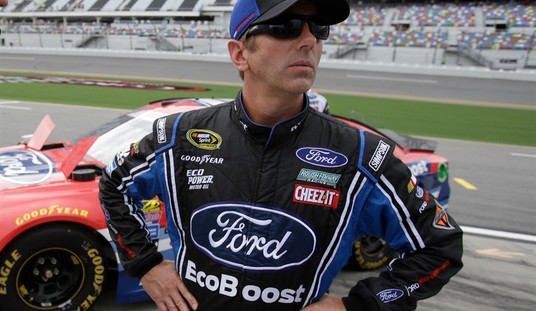There’s no doubt about it: big media’s audience is definitely skewing older. Via Power Line, George Will observes:
The combined viewership of the network evening newscasts is 28.8 million, down from 52.1 million in 1980. The median age of viewers is 60. Hence the sponsorship of news programming by Metamucil and Fixodent. Perhaps we are entering what David T.Z. Mindich, formerly of CNN, calls “a post-journalism age.”Writing in The Wilson Quarterly, in a section on “the collapse of big media,” he rejects the opinion of a CBS official that “time is on our side in that as you get older, you tend to get more interested in the world around you.” Mindich cites research showing that “a particular age cohort’s reading habits do not change much with time.”
Baby boomers who became adults in the 1970s consume less journalism than their parents did. And although in 1972 nearly half of those 18 to 22 read a newspaper every day, now less than a quarter do. In 1972 nearly three-quarters of those 34 to 37 read a paper daily; now only about a third do. This means, Mindich says, “fewer kids are growing up in households in which newspapers matter.”
The young are voracious consumers of media, but not of journalism. Sixty-eight percent of children 8 to 18 have televisions in their rooms; 33 percent have computers. And if they could only have one entertainment medium, a third would choose the computer, a quarter would choose television. They carry their media around with them: 79 percent of 8-to-18-year-olds have portable CD, tape or MP3 players. Fifty-five percent have hand-held video game players. Sony’s PlayStation Portable, which plays music, games and movies, sold more than 500,000 units in the first two days after its March debut.
Brian Anderson, the author of South Park Conservatives agrees. He told me the week before last:
Let’s consider the media universe. With news and opinion, a lot depends on where people are gravitating for their information, and here the traditional or mainstream media, overwhelmingly liberal in orientation, are losing sway–with astounding rapidity. Writing in the New Yorker recently, the media critic Ken Auletta pointed out something I hadn’t noticed: the commercials on the Big Three network newscasts are frequently hawking drugs like Viagra and Mylanta, and the broadcasts themselves often focus on health issues. There’s a reason for that emphasis on infirmity: the average age of a network news watcher is now 60; only about 8 percent of viewership is between 18 and 34. Ten years ago, 60 percent of adult Americans regularly tuned in to one of the network newscasts. Now it’s only about one in three. And people have lost trust in the mainstream outlets. A Pew Research poll last year found that just 21 percent of its respondents viewed the New York Times as a trustworthy news source–a figure below that of Fox News, it’s worth noting.Americans are increasingly turning to new media to get informed. About 40 percent of Americans now watch cable news broadcasts. One in five Americans, maybe even more, look to political talk radio for knowledge of the world. Around 12 percent–26 million Americans–are now reading political blogs, a medium that didn’t really exist a few years ago (and even more are using the Internet more broadly for information). And in the new media, the Right either dominates (as with talk radio and increasingly cable news, where Fox News is the ratings giant) or has at least as much influence as left-of-center sources (as with the Internet and Blogosphere).
Publishing is no longer a liberal preserve–just look at the bestseller list. New York publishing houses, long resistant to conservative ideas and arguments, are falling over themselves to launch right-of-center imprints and sign up conservative authors. Simon & Schuster has just announced former Bush official and pundit Mary Matalin will head up a new conservative line, joining Penguin Books’s Sentinel and Doubleday’s Crown Forum, both recently launched right-of-center imprints.
All these changes have taken place in just a few years. The oldest of the new media–political talk radio–dates only from the late eighties, after Ronald Reagan’s FCC junked the Fairness Doctrine. Fox News has only been around since 1996. The blogs and Internet publishing are of course newer still. Their full impact has yet to be felt.
As Will writes:
The future of the big media that the young have abandoned is not certain. But do you remember when an automobile manufacturer, desperately seeking young customers, plaintively promised that its cars were “not your father’s Oldsmobile”? Do you remember Oldsmobiles?
Vaguely. Isn’t that what Teddy Kennedy used to drive?










Join the conversation as a VIP Member